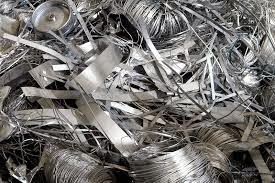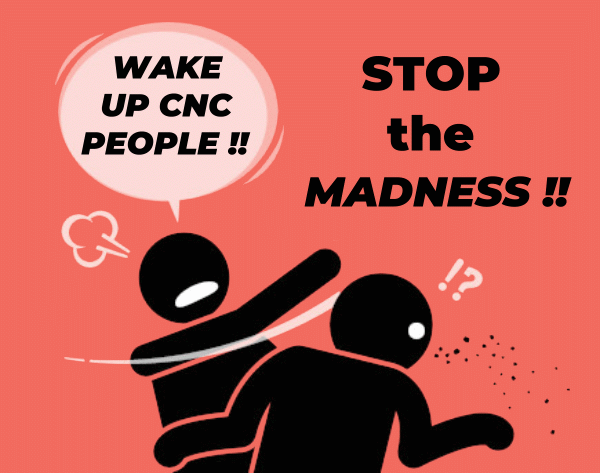We have dedicated a lot of time and brought out a lot of ideas in our Shop Efficiency series … but most have been based “on the shop floor” and have targeted machining … set-up … and tooling. Quite a few clients have written us to ask about the business side … more of the “How do I actually know if my shop is efficient” … which is a great question. So in this post we turn our attention to the shop management and specifically ways of gauging your shop efficiency.
I have listed a few of what I consider critical areas in this Shop Efficiency post … one’s that I feel are among the easiest to gauge and important to watch … what I call the Magnificent Seven. The points below are not in the order of most importance … just simply a list of all the metrics. Creating a spreadsheet and taking a daily count with most of these factors will allow you to see the results as they happen … and over time will reveal the ups and downs of the shop in general … and allow you to make corrections. You can start your journey on the first of the month … for example … and take a few minutes every day or every week to fill in the numbers … building the information in the spreadsheet as you go along. Make a graph … and watch what these factors will reveal. If you stick with it … you will be shocked … maybe happily … maybe not.
(1) Revenue Per Man Hour
Revenue per Man-hour is the annual revenue ( or do it by month ) divided by the total paid man-hours, including paid vacations and overtime. Keeping a running total of these activities and although this is a general look at the numbers … it can be very telling.
(2) Lead Time
Customer Order Lead Time includes order-entry through production to shipment for every job. Again, start a running list from the first of the month and carry on. This stat will reveal your shop efficiency as well as give you a chance to look at the quantity of work going through the shop … and the time frame it takes to go from order received to revenue received.
(3) Labor Turnover
 Labor Turnover Rate is the number of voluntary and involuntary separations divided by the typical number of employees. Hopefully you won’t be keeping a monthly log of this stat … but keeping a log of the turnover rate will still yield a telling tale. Although this stat has it’s own revelation … it also shows one key point regarding efficiency. When an employee leaves a company ( for any reason ) he / she also takes a piece of that company’s memory and experiences with them. That loss of memory or experience can lead to efficiency and productivity loss. A company that experiences high turnover rates needs to find ways to insure that experiences and memory don’t leave the building along with the employee. A low labor turnover rate … as the inverse … helps achieve and maintain high performance, productivity and efficiency.
Labor Turnover Rate is the number of voluntary and involuntary separations divided by the typical number of employees. Hopefully you won’t be keeping a monthly log of this stat … but keeping a log of the turnover rate will still yield a telling tale. Although this stat has it’s own revelation … it also shows one key point regarding efficiency. When an employee leaves a company ( for any reason ) he / she also takes a piece of that company’s memory and experiences with them. That loss of memory or experience can lead to efficiency and productivity loss. A company that experiences high turnover rates needs to find ways to insure that experiences and memory don’t leave the building along with the employee. A low labor turnover rate … as the inverse … helps achieve and maintain high performance, productivity and efficiency.
(4) Completion Rate
This factor can be described as the On-Time Completion Rate. It is the percentage of goods delivered on time. This is … obviously … a direct result of shop efficiency. Keep a log for every job going through the shop and how it fared in the On-Time Completion Rate.
(5) Scrap and Rework
This factor is the Scrap and Rework as a percentage of shop sales. Scrap and rework cost time and money. Some scrap and even some rework is inevitable … but this factor may be most useful as an indicator of how well things are going out on the shop floor. An high scrap and rework percentage is an early tip-off that something … or someone … needs a deeper look.
(6) Machine Uptime
Total Machine Uptime is the hours of production as a percentage of the total operating hours for the shop per week. In other words, what percentage of an average shift are each of your shop’s machines running. Basically put … your employees get paid every day whether they are productive or not … idle machines are not making that money even though the employees are getting paid. Therefore, how much a machine is up and running becomes an important factor for determining just how productive and profitable that shop is.
(7) Machine Availability
Machine Availability is the time machines are actually available for use compared to the time they are supposed to be available. Unscheduled maintenance or other problems will reduce a machine’s expected availability … and impact production schedules negatively which in turn reduce the ability of a shop to deliver product on time.
There will be some out there that utter the phrase “I know all this just by being out in the shop every day.” And that may be true. But seeing the numbers on “paper” ( it might be your computer screen ) is much more telling … and much more emphatic … and makes the point much more clearer.
So … there you have it … the Magnificent Seven. Keeping a close eye on these factors or metrics will most definitely put your shop’s efficiency in glaring focus … and will most likely open your eyes and mind to whole list of other metrics that may be pertinent to your particular shop and operation. Taking the time to develop and review your information as it develops will prove to be more than worth the effort … and keeping the faith will insure your shop is on the straight and steady track.
Kenney Skonieczny – President
Kentech Inc.



